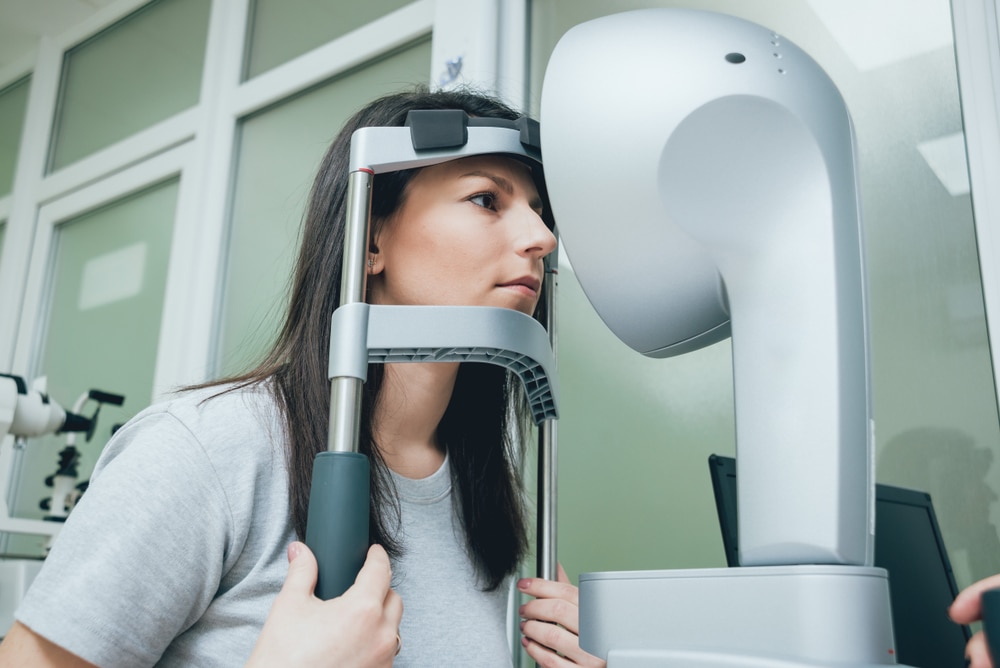
What is Visual Field Testing?
Visual field testing is a part of any eye examination. The Boston Vision team uses visual field testing to test for many different eye conditions. The visual field describes how wide of an area you can see with your eye when you focus on a central point. It includes central and peripheral vision. This helps your eye doctor understand how much vision loss has occurred in either eye. Often, one eye will try and compensate for vision loss in the other, so many people won’t notice their eyesight dwindling, this test can help to diagnose that problem.
The visual field test is a great comprehensive exam that provides your eye doctor at Boston Vision with an abundance of information that other eye tests cannot achieve. It can detect eye diseases such as glaucoma or retinitis pigmentosa. It can also diagnose medical conditions like brain tumors and strokes.
What Are the Types of Visual Field Testing?
There are various ways to perform visual field testing. These ways are:
- Confrontation Visual Field Test: This is a traditional method where the patient looks directly at the eye or nose of their eye doctor. The doctor tests each quadrant in the visual field by having them count the number of fingers that are being shown.
- Automated Perimetry Test: This uses a mobile stimulus that is moved by a perimetry machine. The patient will indicate whether they see a light by pushing a button or use some other form of acknowledgment.
- Kinetic Visual Field Testing: This test is similar to the automated perimetry test but instead of using blinking lights this uses moving lights.
- Frequency Doubling Perimetry: This test uses an optical illusion that flickers at varying rates, if the patient is unable to see these at certain times it could indicate vision loss.
- Electroretinography: This test checks for retina conditions. Patients’ eyes will be dilated with eye drops. Then the patient will look at a machine with flashing or varying patterns of light. During this, an electrode is used to measure the eye’s electrical activity responding to the light.
These visual tests all test for differences in the vision of patients. Depending on your eyesight, diagnosis, and level of vision loss, your doctor will choose which vision test should be done.
Who Needs Visual Field Testing?
The visual field test is a regular part of eye examinations, especially for people who are at risk for vision loss from diseases or other problems. Some people may need to be monitored more regularly by the ophthalmologist. If you have any of the following conditions, you should be seeing an eye doctor regularly:
- Multiple Sclerosis
- Hyperthyroidism
- Glaucoma
- Pituitary Gland Disorders
- Stroke
- Central Nervous System Problems
- Diabetes
Schedule a Consultation
Getting routine eye examinations is an important part of making sure that your vision is taken care of. Come into the Boston Vision to get a visual field test to make sure that you are not experiencing any vision loss.





